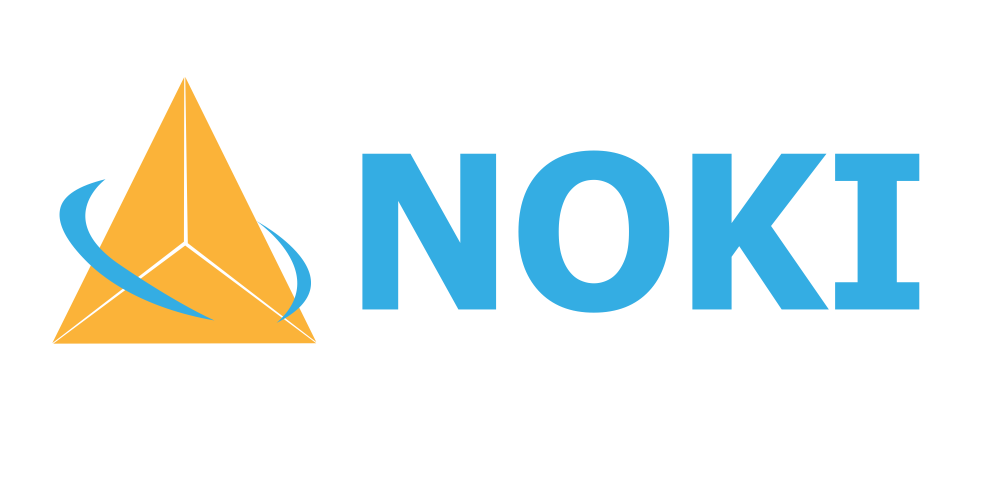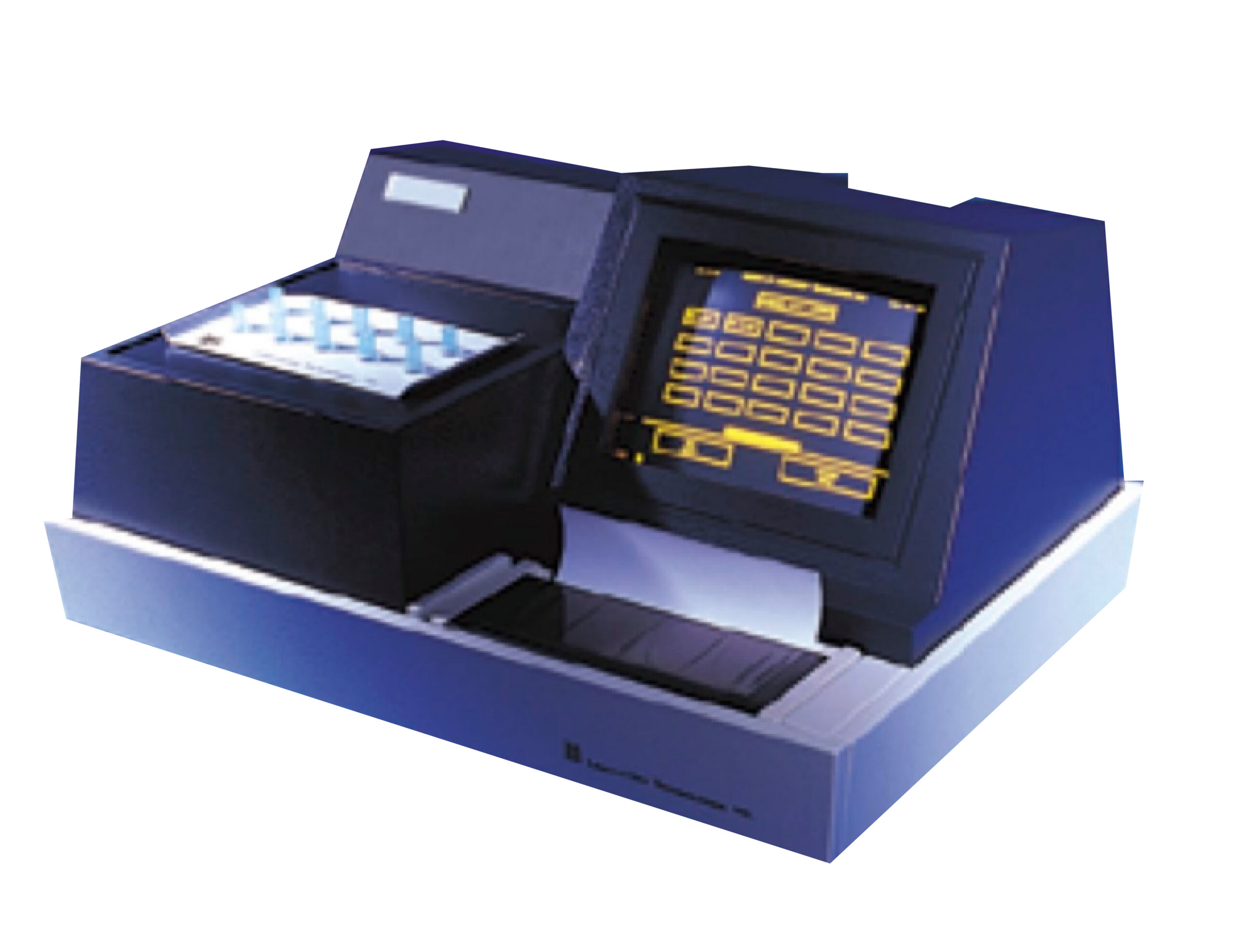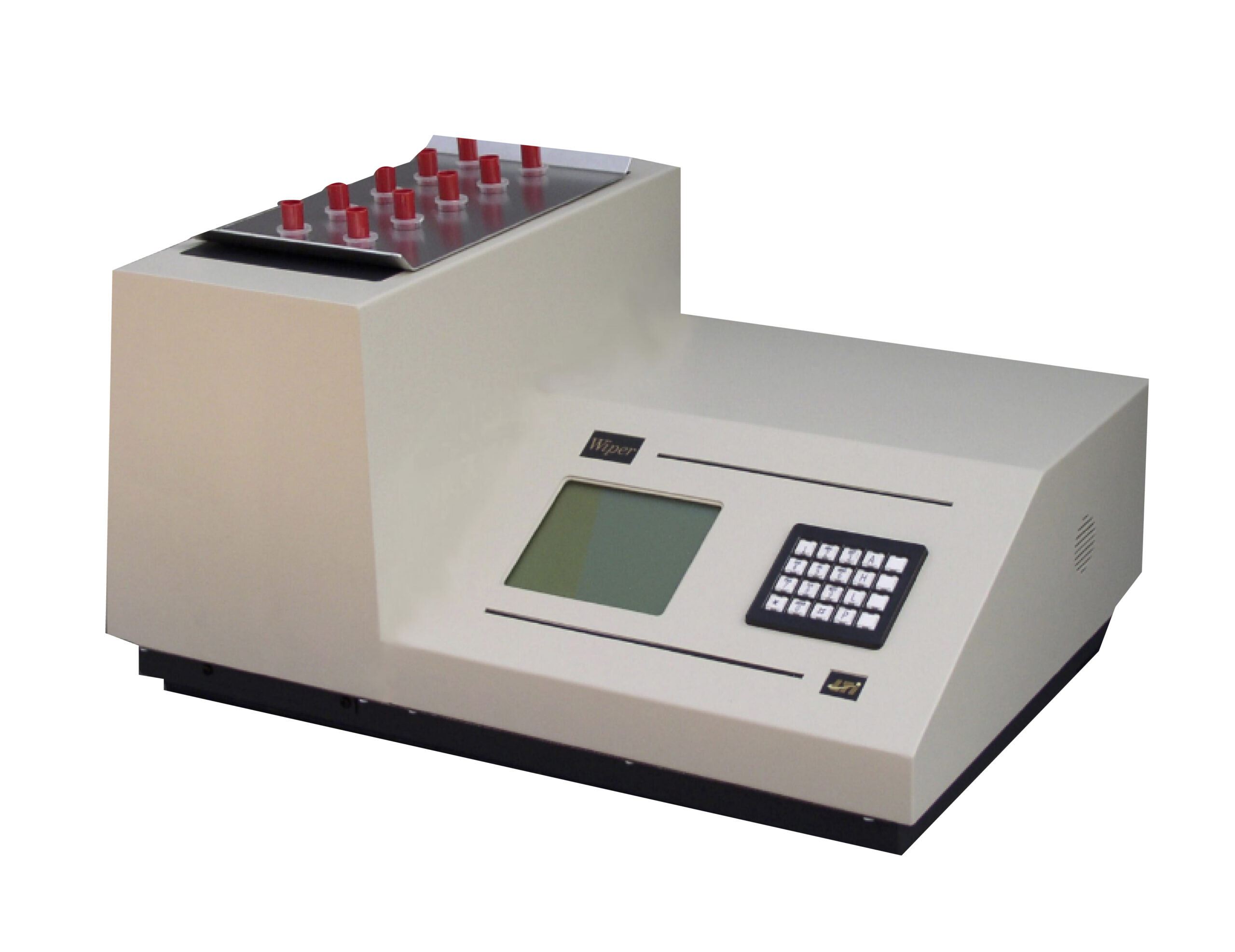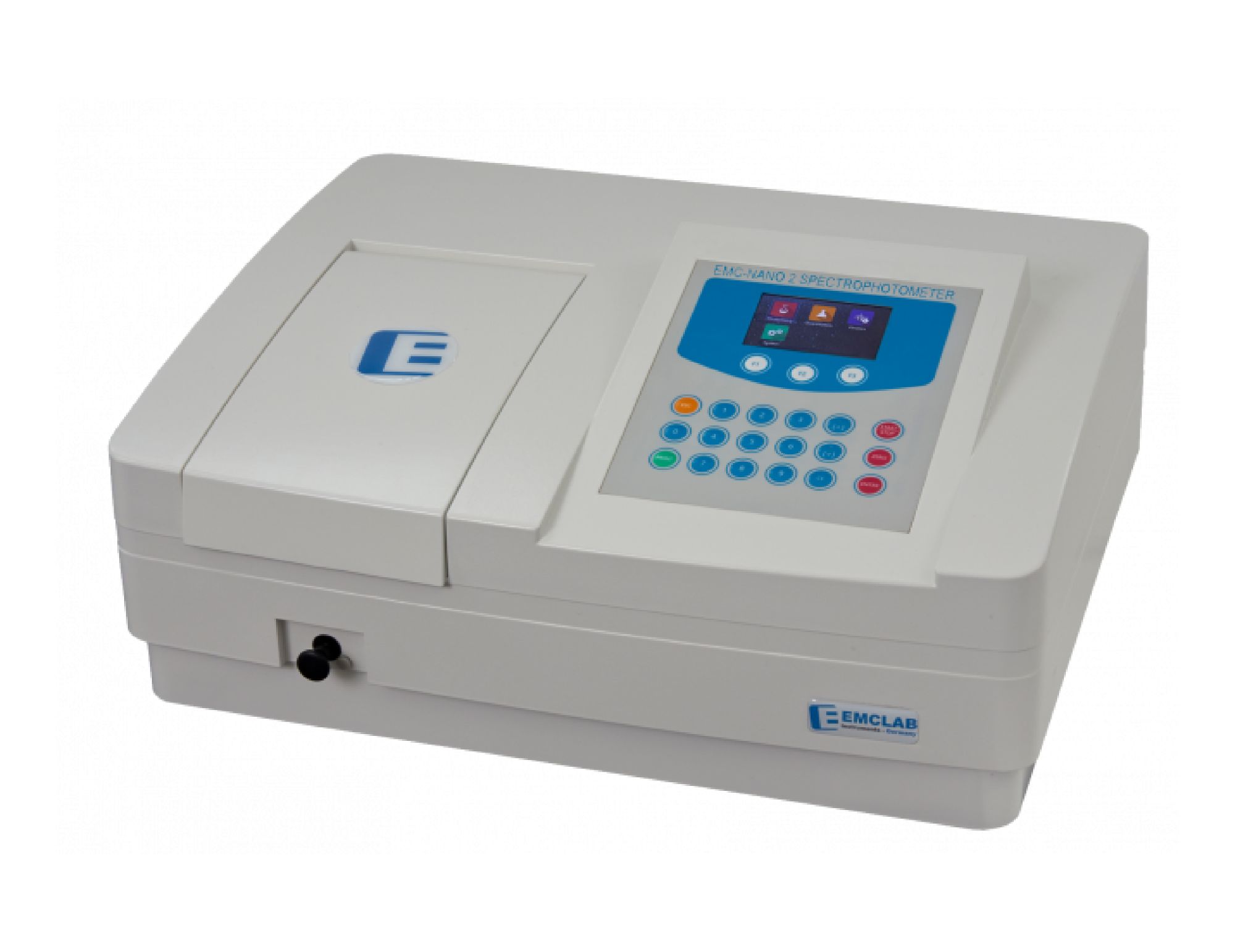Description
Data Reduction
The GENESYS 5000 Series gamma counters contain advanced data reduction features suitable for calculating all versions of RIA, IRMA, Ratio and Screening assays. With the flexibility to independently choose curvefit, response variable (transformation) and graph paper, the GENESYS 5000 gives you the power to adequately handle the wide range of radioimmunoiassays available for clinical and research applications; from the routine through the esoteric.
The range of popular curvefits include: point to point, straight line, weighted straight line, cubic spline, universal and four parameter logistic (4PL).
Response variables include: %B/TC, %B/B0, CPM, TC/B, B0/B, 1/CPM, CPM/(standard #), %CPM/ (High Standard), CPM/(TC-CPM) and (TC-CPM)/CPM.
Standard curve axes choices are: Linear-Linear, semi-Log, Log-Log, Logit-Log, Linear-Log and Log-Linear.
With this variety of choices, even the most demanding applications can be met with ease. A brief description of each curvefit algorithm follows:
Point to Point:
This curve fit connects adjacent standard points with a straight line. This is a “connect the dots” approach, and is quite commonly used in older software packages and for connecting particularly difficult data. This curve fit is best used when there are many standard points within the curve, or when there is a very sharp change in slope. This curvefit minimizes curvature errors.
Straight line:
This curvefit utilizes a single, straight line to fit all standard points within the curve. This fit, therefore, requires that all points on the curve be first “linearized”. This is most often
accomplished by using a Logit-Log or/Bound type of transformation. By first linearizing the data, fitting errors will be minimized.
Weighted Straight Line:
This curvefit begins as a straight line, then adds “weighting factors” as needed. These weighting factors are particularly helpful to minimize the effect of stray points which are further from the most stable portion of the curve (mid dose). The weighting factor changes the slope of the curve to maximize the influence on the mid-dose area of the curve.
Cubic Spline:
The Cubic Spline is actually not a single curve, but rather a series of curvilinear segments, which are joined together at “knots”. These knots are the standard points. Therefore, the overall curve must pass through the mean of each of the standard points exactly. The cubic spline fit is very commonly used in IRMA assays, where a larger number of standard points is typical. Due to the nature of the cubic spline equation, the standard curve must contain at least 4 points in order to fill the equation.
Universal Curve:
The Universal Curve found in the Genesys 5000 series gamma counter is an extension of the basic cubic spline with some very unique differences. The Universal Curve utilizes the statistical uncertainties of each standard point in the curve to allow a “range” into which to fit the curve, rather than force it through the mean.
Because of this statistical “smoothing” function, the Universal Curve has the ability to fulfill a much wider range of data than the standard cubic spline. The Universal Curve can be specifically useful in IRMA assays which involve very low count standard points at low dose. Since the uncertainty is greatest near the extremities of the curve and particularly the area of lowest count rate, this region logically should impact the shape of the overall curve the least. Thus, the Universal Curve compensates for these inaccuracies by extending the range through which the curve is fit, thereby greatly improving the overall performance of the assay as a whole.
Four Parameter Logistic:
The four parameter logistic curve fit is based upon the “All Fit” program originally developed at NIH. It is basically an extension of the two parameter Logit-Log method. By its nature, the 4PL, like the cubic spline must have at least four standard points in order to plot a curve. The four parameter is the most “robust” of all the curve fits, and is the most widely suitable for a variety of applications from sigmoidal or J-shaped RIA’s to high sensitivity IRMAs.
The nature of the 4PL equation requires that the GENESYS 5000 SERIES gamma counters perform many iterations of highly complex calculations in order to achieve the best fitting curve. It is therefore common to wait A second or two for the curve to calculate.
A brief summary of the curvefits and the best instances to use them:
Specifications-
|
Situation |
Graph Paper |
Curvefit |
|
Standard RIA |
Logit-Log |
Weighted Strait Line |
|
Standard RIA(sigmoidal curve) |
Lin-Lin |
Cubic Spline/4PL |
|
Standard RIA |
Linear-Log |
Cubic Spline/4PL |
|
RMA |
Linear-Log |
4PL/Pt to Pt |
|
IRMA |
Lin-Lin |
4PL/Cubic Spline |
|
IRMA |
Log-Log |
4PL/Pt to Pt |
|
IRMA w/ rapid slope change |
Lin-Lin/Semi- Log |
4PL/Pt to Pt |
|
Difficult curve |
Lin-Lin/Semi- Log |
4PL |
ISOTOPE SELECTION
While I125 is certainly the most commonly used isotope in the clinical laboratory, other applications and uses often arise. In Nuclear Medicine facilities, research laboratories, extended clinical and esoteric testing often require the use of different isotopes. TheGENESYS 5000 Series gamma counters are designed to effectively and efficiently count a wide variety of isotopes, vastly extending the useful range beyond routine RIA.
The GENESYS 5000 Series gamma counters utilize a NaI(tl) crystal detector. These detectors incorporate a monoline well-type configuration, ensuring superior geometry and counting efficiency over through-hole styles. The well is bored deeply to accommodate varying sample sizes with minimal loss of efficiency due to “angle of incidence”.
Additionally, each GENESYS detector contains extra crystal mass at the bottom of the detector to allow better “stopping power” for higher energy isotopes. Greater efficiency is achieved than with traditional small diameter detectors. Two stage lead shielding provides excellent shielding between detectors, with an additional heavy lead plates surrounding the entire detector array. This provides very low background radiation levels, for improved signal to noise ratio and superior counting results.
For assays involving the use of more than one isotope simultaneously (i.e. B12_Folate), The GENESYS 5000 Series gamma counters employ simultaneous dual label counting. Simply put, both isotopes are counted at the same time, spilldown between spectra is automatically eliminated.
!
For situations involving higher energy isotopes (i.e. Cr51, In111, Fe59, etc.), a feature
known as crossover correction is employed, thereby eliminating the effects in adjacent detectors.
One important application for this high energy capability is in the area of P.E.T. counting. GENESYS 5000 Series gamma counters can achieve a counting efficiency of 47% for Na22 with the proper window settings. The GENESYS 5000 Series gamma counters has a counting range from 1 -1000 KEV.
!
STANDARD CURVE TEMPLATE
THIS RUN WAS SAVED FROM AN UNNECESSARY REPEAT WITH THE USE OF THE TEMPLATE!
Look at standard #5. It is denoted with a square box as opposed to a dot. Anytime a Template value is used in the standard curve, that point appears as a large open box–so that it cannot be confused with a “true” point.
WHAT IS THE TEMPLATE?
The Template is comprised of stored Percent Binding values for each standard present in the curve. The values are averaged continuously, so that each run improves the precision of the Template. The Template is very useful for standard curve quality control and editing.
HOW IS THE TEMPLATE USED?
– On a comparison basis to determine for yourself the validity of the current assay’s curve. -To replace “bad” points on the current run’s curve with proven Template values.
-By setting the Template into the auto-run’s curve with proven Template values.
By basing all calculations on Percent Binding values, the Template offers an ideal solution to curve editing problems.
The Template function is unique in that it allows you to compare each individual standard against the historical values from previous complete monitoring of your assay using your own historical values not those of a manufacturer, run under special conditions.
PATIENT RESULT’S SUMMARY
The GENESYS offers the unique ability to generate Patient Summary Reports, complete with the Patient Mean for this run, Standard Deviations, and a concise summary of patients results.
Full editing of any or all patients is possible before the summary report generation. Post-processing calculations, such as dilutions, may be easily calculated. The unknown results appear on the touch screen.
!
*Patient names are displayed only with Worklist installed
- Dilution factors may be applied
- Results that are off scale may be designated as repeats.
- Patient result corrections and reruns may be flagged before sending results to amainframe to insure accurately reported answerAfter any editing is complete, the user obtains a fully documented report flagging any changes – the Patient Summary:
!
Along with the test results, after any post run calculations, you also obtain:
- The results mean for this run
- +1, -1, and +2,-2 standard deviation values
- The unknowns categorized according to where they fall within +/-2 standarddeviations from the mean.
EDITING
The GENESYS 5000 Series gamma counter offers more flexibility in assay editing than any gamma counter ever available. Our exclusive historical template tracks and compares the binding of each standard curve point over time to insure lot-to-lot integrity of your assays and provide an accurate reference for standard point editing. Standards, controls, and Q.C.’s may be fully compared on the fly…even as the rest of the assay is counting.
The Genesys 5000’s unique Patient Editing allow full post processing capabilities to handle dilutions, range modifications, deletions, etc….and of course all editing is documented.
QUALITY CONTROL SOFTWARE
The GENESYS 5000 Series multi-well gamma counter come equipped with software to allow On-Line quality control evaluation and storage.
Probably the most useful feature of all within the QC software, is its ability to update the QC limits – either for a marked range or for the entire table. There are no manual calculations involved, GENESYS does all the work when you select UPDATE LIMITS.
With complete QC reports, including Levey-Jennings charts, no more manual plotting is required. L-J charts can even be reviewed while the assay is counting, to compare this run with the previous ones. Any editing that is required can be performed before the unknowns are calculated and printed.
After run number 61 is reached, the oldest run is removed and all other runs moved up one. In this way GENESYS always keeps the most current 60 QC runs available.
As you can see, GENESYS QC software is extremely versatile and comprehensive, But best of all, it’s ON-LINE and an integral part of the GENESYS 5000 Series.
INSTRUMENT QUALITY CONTROL
The GENESYS 5000 Series incorporates software containing complete programs for monitoring and documentation of all instrument parameters. the routines include: Background Check, Detector Efficiency Check, Chi-Square interpretation, Normalization of detectors and Service Diagnostics.
!!!!
!!!
To Insure the accuracy of any multi-well gamma counter, background radiation levels and detector efficiencies must be monitored often and documented to satisfy regulatory agencies. the GENESYS provides simple routines for these requirements under the DAILY COUNTER CHECKS Library. The results are automatically calculated, along with a summary printout, if desired.
Detector drifts are automatically flagged. If the matching falls outside acceptable limits, recommendations for action are displayed on the screen.
Through SERVICE DIAGNOSTICS, the GENESYS can perform multiple system self- checks. All tests are automatic and potential problems are flagged and identified. tests included are: Memory, Printer, I/O Test Ports, Touch Screen, Voltage Levels, EEPROM’S and Memory CRC test.
Through the ISOTOPE LIBRARY, the GENESYS can be normalized (calibrated) quite easily, Each of the detectors are mathematically matched and a summary report can be printed for your record.
DECAY CORRECTED STORED CURVE
The following assay was run on December 12 2000: (click on an image to get a larger view)
The following assay was run with the stored curve from the above assay on December 23 2000. Note the decay correction of the standards: (click on an image to get a larger view)
When using a stored curve, the user is able to:
– SAVE TIME: When only running the QC’s and unknowns, the user has saved time in sample preparation and reading the assay. This increases the turn-around time; which is especially important in Stat situations.
-ACHIEVE ACCURACY: The assay is validated with each of the standards corrected for isotope decay, minute by minute. Quality Control tubes give added assurance.
-SAVE MONEY: Tubes and reagents are saved each time a stored curve is run. This allows for doing tests in-house that were once send outs because of the low volume.
Worklisting
Within the GENESYS is an optional patient data management feature, accessed through the Worklist Library. Many options are available, including:
- Design your own Worklist: you choose from a selection of Patient Name, Accession Number, Collection Date, Referring Location and the Assays.
- Patient Demographics: may be entered through the Screen Keyboard, External Keyboard, Barcode Reader, or brought in from a host computer.
- Output Data: for convenient interfacing to off-site computers.
- Customizing Worksheets: for the day’s work.
- Search: for a specific entry on any combination of 5 fields. This is useful when patient reports have not been generated yet and you need a particular patients results.
- Concise Patient Reports: Pending (shown below), Complete, or both, may be printed.
HIGH ENERGY ISOTOPES
The GENESYS 5000 Series has the unique capability of counting a wide variety of isotopes to provide flexibility beyond that of routine RIA’s. Ten different isotopes may be programmed into the system.
Isotopes such as Cr51, I131, In111, Na22, and Fe59 are among some of the more common isotopes used in today’s lab.
With this flexibility, Schilling and Blood Volume are easily run. The GENESYS incorporates several features to make this possible:
1. CROSSOVER ELIMINATION SOFTWARE makes counting high energy isotopes possible while still retaining all the precision and accuracy of a single well system. Any contributing activity which might “cross-over” from one well to the next, is monitored and subtracted out, without the need to “shut off” every other detector.
2. SELECTABLE WINDOW SETTINGS allow the user to set upper and lower windows up to 1000 KEV. With this option, you can set a wide window to scan unknowns for any interfering isotopes.
3. AUTOMATIC SPILLDOWN CORRECTION is applied to each well when running dual label assays to account for any spilldown of the high energy isotope into the lower energy window. Any two isotopes may be counted simultaneously.
4. A UNIQUE CRYSTAL DESIGN enables the GENESYS to count high energy isotopes without the need for extremely large diameter detectors. Having many wells counting simultaneously, along with the high efficiency design of our crystals greatly increases the throughput.
Interfacing
The GENESYS 5000 Series gamma counters contain two bidirectional serial ports, both of which support RS232C. The connectors are DS TYPE 25 pin female, meeting the RS232C standard. The user may set the electrical configurations of each port by selecting USER & PORT PARAMETERS SETUP.
!
You may also select how to configure the data leaving the GENESYS. Your choices are:
Header Type:
A. Complete – gives a printout that includes a header with a complete description of the assay and protocol. (i.e. assay edited by, use template, dose value).
B. Partial – gives a printout with the Assay ID and Protocol ID names only.
C. None – gives a printout without any heading
Summary Information: Includes the Summary of Controls, References and StandardsUnknowns Only: Eliminates standards and quality controls results for printing.Individual Tube Data: Option to print replicate results only.
Averages: Option to print average results only.
Columns to Output: Choices of parameters to have printed.
!
The GENESYS comes with a Parallel printer, If you choose to use another printer connected though either port A or B, it must be a serial printer. The electrical configuration of the printer MUST match the GENESYS Port parameters (i.e. Baud Rate, Word Length, Parity, Stop Bits, DTR and Request to send status). Other options are shown on the “destination of data” on assay summary. Output can be:
1.) All Data (shown above)
2.) CPM Only
3.) Computer – (this is explained in the manual)
Reliability
Being completely solid state and built with great care and precision, the GENESYS 5000 Series gamma counters have gained a reputation for being extremely reliable and requiring very minimal servicing. We include a one year limited warranty with eachGENESYS gamma counter.
This warranty includes prompt and courteous response by our factory authorized service engineers*. Each service engineer is supplied with all the parts and information necessary to complete the job quickly and properly.
LTI keeps an internal service team to help in quickly identifying the problem. In most cases the answer is very simple, and is an applications difficulty due to a new user who is unfamiliar with the instrument rather than an actual instrument failure. Our trained service staff is ready to respond to your needs, and in most cases is able to clear up the difficulty without incurring any down time to the user.
* On site service is provided for our U.S. customers only. International customers receive a one year parts only warranty. All service labor is performed by your service technician, or through your local authorized LTI distributor.
Service Training videos are available and in house service is only a phone call away.
Compact Design
Components of the Genesys 5000 fit neatly into a single compact unit at 28″ (71 cm)W, 20″ (50 cm)D, 15″(38 cm)H it occupies less than 30″ of bench space.
Model 5005 contains 5 well and weighs 115 lbs.(52.1 kg)
Model 5010 contains 10 well and weighs 130 lbs.(59.9 kg)
Model 5015 contains 15 well and weighs 145 lbs.(65.7 kg) Model 5020 contains 20 well and weighs 160 lbs.(75.5 kg) Model 5025 contains 25 well and weighs 175 lbs. (79.3 kg)
Shipping weights are slightly high due to packaging materials and supplies.
Domestic add 65 lbs. (30 kg) International add 130 lbs. (59.9 kg)



